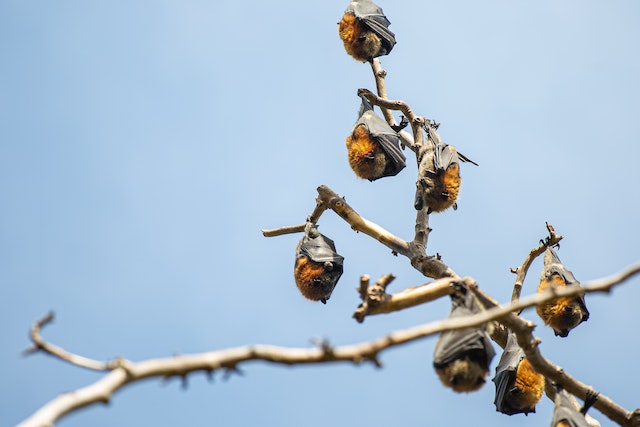The Bat Eviction Handbook: Effective Methods for Bat Removal

There are a lot of problems that might arise when bats roost on or near your property. The fact that these flying mammals control insect populations helps the ecosystem. However, their persistent presence can also bring disorder where there was none earlier.
Large amounts of guano, or bat excrement, can build up, resulting in ugly heaps and perhaps causing damage to structures. Furthermore, bats roosting causes annoying and unbearable noise, especially if they live in ceilings or attics. They disturb your sleep and elevate your stress level.
In addition, their presence in homes can breed foul smell and transmit diseases like histoplasmosis and rabies.
For these reasons, employing a bat removal service in Indianapolis or following some techniques to remove bats from your home is excellent. This article discusses some effective methods to remove bats from your home.
Install Exclusion Devices
If you like to do things yourself, consider employing bat-exclusion devices. These devices work such that bats can leave your home but are unable to gain re-entry. Start with locating the bats’ access locations, typically tiny cracks or gaps in your walls or loft. Once found, put an exclusion device that enables the bats to fly away but prevents them from returning.
Remember that you should never incorporate exclusion measures until young bats, known as “pups,” can fly. When you implement exclusion devices and the baby bats in your home can’t leave, they may starve, leading to a more severe issue, such as dead bats on your property and the attraction of other pests.
The safest times for exclusion in most places are often from late August through early May. However, contact the local wildlife offices to ascertain the best time.
Use Natural Repellents
Using bat repellents is a straightforward method to drive away bats from your property. Makers of these sprays often design them with synthetic or natural materials that bats find unbearable.
Bat repellent sprays can prevent and remove bats in your homes when you apply them strategically at entry and nesting locations and small holes that lead to your home interior.
These sprays contain essential oils like spearmint and peppermint (which give off smells that bats dislike). The beauty of these natural products is that they cause no harm to bats and other nearby animals and pose no risk to people.
Another way to utilize the sprays is by attaching them to eaves. Since they can decompose by the actions of living organisms, you don’t need to worry about any crucial safety measures.
The best way to employ this technique is to keep bats away from your homes and remove them at the beginning of their invasion when they are still at a minimal number.
However, bat repellants may not be efficient to exclude an established bat colony in your residence. Other methods can be your best option, or you can combine bat repellents with other bat removal techniques, such as an exclusion box for big colonies.
Mount Bat Boxes

That bats are beneficial to humans is not up for debate. They help to reduce insects (such as mosquitoes) wherever they nest. Although it might seem contrary to your objective (getting bats off your property), buy or build a bat house for these flying mammals once you begin the bat exclusion process in your home.
Bat houses (boxes) offer another nesting environment for bats. They are often small enclosed structures built with wood. The goal is to drive these bats from your residence and attract them to another to prevent them from returning. Bat boxes are a less expensive way to keep excluded bats from your home if you reside in areas where wood is accessible.
Once you build or purchase these boxes, install them on a tree or structure near your property with considerable shade.
Seal all Entrances
Bats often enjoy long life and excellent memories. Therefore, they will always try to regain entry into your home repeatedly. For this reason, you must seal all entry points as part of your bat removal process.
Assuming the time of the year permits bat removal, you must seal all entrances you have installed one-way exclusion devices and other potential entry openings. However, you must carefully check if all bats have left your home before any permanent sealing to prevent trapping these mammals inside.
Since bats don’t effectively claw or chew through barriers to gain entrance, they will be unlikely to gain re-entry into your home.
Remove Food Sources
A warm space safe from predators and the availability of food sources make an ideal real estate for bats. If removing bats from your home has become challenging, you probably did not fulfill all the requirements.
The next step is to discover the bat species invading your home. Doing so will help you determine the food sources of such bats and why they keep returning. Often, bats feed on fruits, insects, or both. Once you notice their food around your garden, it is time to remove them.
Insects like moths, mosquitoes, and beetles commonly attract bats. Often, homes suffering from too many mosquitoes experience bat invasions. Removing mosquitoes from your home will protect you from malaria and drive away bats. However, ensure you use an insecticide that doesn’t affect bats and other animals.
Most fruit-eating bats are not often selective. Therefore, remove access to all fruits in your yard by covering them with bird nesting. Furthermore, consider your flower bed choices since some bats feed on nectars.
Safely Evicting Bats from Your Home

Managing a bat invasion can be a daunting task. However, the appropriate approach and expert help can help evict bats from your home safely and successfully. Implementing a bat box is an excellent alternative to accommodate the bats leaving your home, and exclusion devices ascertain they can’t return to your residence.
Identify bat entry points and roosting areas in your home and begin the exclusion process. Common signs of bats include feces, noise, and foul smell. Working with a bat removal service is also an excellent way to remove bats permanently from your home.



